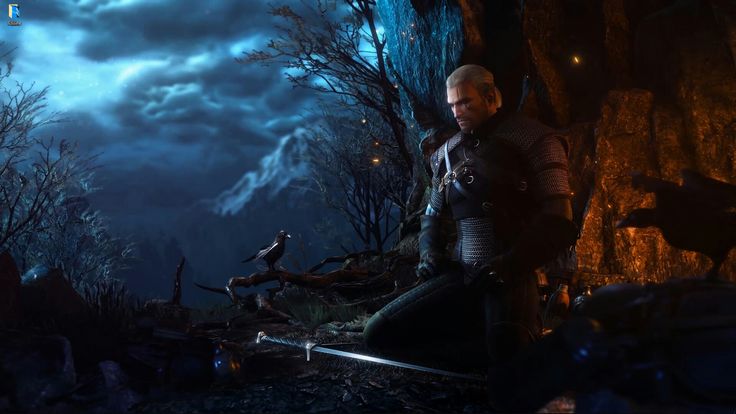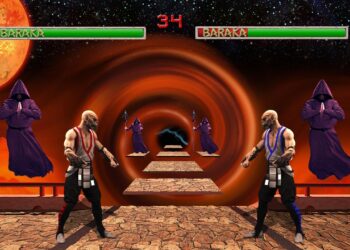The legacy of The Witcher 3: Wild Hunt is monumental. Released a decade ago in 2015, it didn’t just win awards; it fundamentally altered our expectations for open-world role-playing games. Its masterful storytelling, unforgettable characters, and sprawling, vibrant world created a benchmark that developers have been chasing ever since. It is within this long shadow that CD Projekt Red (CDPR) is crafting its next epic, a new saga codenamed “Polaris,” which the world has unofficially crowned The Witcher 4. For years, the questions have been endless: what will it look like? How will it play? How can it possibly surpass a masterpiece? The answer, it turns out, lies not just in a new story, but in an entirely new reality.
CD Projekt Red has officially confirmed that the next Witcher saga will be built on Unreal Engine 5.
This announcement is far more significant than a simple change in software. It represents a foundational shift in the studio’s entire development philosophy, a strategic pivot away from its own celebrated but notoriously complex proprietary technology. It signals the end of an era and the dawn of another, promising a technological leap so profound it could redefine the franchise and the genre once more.
This article will provide an exhaustive breakdown of this monumental decision. We will explore why CDPR moved away from its own REDengine, delve into the specific, game-changing features of Unreal Engine 5 that will shape the next Witcher saga, and analyze what this technological revolution means for the gameplay, the world, and the future of one of gaming’s most beloved franchises. This isn’t just a new chapter for Geralt’s successors; it’s a new world being forged in the fires of a different engine.
The End of an Era: Why CDPR Abandoned REDengine
To understand the magnitude of the switch to Unreal Engine 5, one must first appreciate the legacy of the engine it replaces. The REDengine was CDPR’s secret sauce, a proprietary technology built and refined in-house, powering everything from The Witcher 2 to Cyberpunk 2077. It was capable of producing breathtaking visuals and enabling the kind of dense, narrative-driven worlds that became the studio’s hallmark.
However, developing and maintaining a cutting-edge game engine is a Herculean task, even for the most talented studios. The REDengine, for all its power, was known to present significant challenges:
- Steep Learning Curve: New developers joining CDPR faced a daunting learning curve. Unlike industry-standard engines like Unreal, knowledge of the REDengine was not a transferable skill, leading to longer onboarding times and a more limited talent pool to draw from.
- Technical Debt and Complexity: As the engine was upgraded for each new project (The Witcher 3, its expansions, and then the monumental leap to Cyberpunk 2077), its complexity grew exponentially. This “technical debt” can make implementing new features or fixing bugs feel like performing surgery on a running engine—a slow, delicate, and often perilous process. The troubled launch of Cyberpunk 2077 was, in many ways, a symptom of an engine being pushed beyond its limits.
- Tooling and Workflow: While the end result was beautiful, the development tools and workflow within the REDengine were reportedly less user-friendly and efficient than those offered by modern, third-party engines. This can slow down iteration, the process of rapidly testing and improving ideas, which is crucial for creative development.
By moving to Unreal Engine 5, CDPR is not admitting defeat. Instead, it is making a pragmatic and forward-thinking strategic decision. It frees their brilliant engineers from the endless cycle of engine maintenance and tooling development, allowing them to focus their full creative energy on what they do best: building worlds, crafting stories, and designing gameplay. They are handing the foundational work over to the experts at Epic Games, adopting a robust, industry-proven toolkit to build their next masterpiece.
A New Reality: The Game-Changing Power of Unreal Engine 5

Unreal Engine 5 (UE5) is not merely an incremental upgrade; it is a generational leap in real-time rendering technology. Its feature set is designed to empower developers to create worlds of unprecedented fidelity and scale with greater efficiency. For the next Witcher saga, this toolkit is nothing short of revolutionary. Let’s break down the core pillars of UE5 and what they mean for “Polaris.”
A. Nanite: A Revolution in Detail and Scale
Nanite is a virtualized micropolygon geometry system, which is a technical way of saying it fundamentally changes how game worlds are built. Traditionally, artists create highly detailed 3D models (with millions of polygons) and then must create simplified, lower-detail versions (“Level of Detail” or LODs) to ensure the game runs smoothly. This is a time-consuming, quality-compromising process.
Nanite effectively eliminates this. It allows developers to import film-quality, multi-million-polygon assets directly into the game engine, and the engine itself intelligently streams and scales the detail in real-time.
- For The Witcher 4: Imagine a world where every single stone in a castle wall, every leaf on a forest floor, and every rivet on a suit of armor is rendered with cinematic detail, no matter how close you get. The visual distinction between a cutscene and gameplay will simply dissolve. The rocky crags of Skellige or the dense architecture of a city like Novigrad can be realized with a level of intricacy that was previously impossible, creating a world that feels tangibly real and handcrafted at a near-molecular level.
B. Lumen: The Future of Light and Shadow
Lumen is UE5’s fully dynamic global illumination and reflections system. In simpler terms, it simulates how light bounces off surfaces in the real world to create realistic indirect lighting and reflections. Previously, developers had to “bake” lighting into a scene—a static, time-consuming process that lacked realism and dynamism.
- For The Witcher 4: Lumen means light will behave with absolute realism. A torch carried into a dark cave will not just illuminate the surfaces it directly hits; the light will bounce realistically, softly lighting the entire cavern. Sunlight filtering through the dense canopy of a primeval forest will scatter naturally, creating breathtaking “god rays.” The reflection in a puddle will accurately mirror the world around it, including characters moving past. This creates an atmosphere of unparalleled depth and immersion, where light and shadow are not just visual effects but active participants in the world.
C. World Partition: Building a Truly Massive Continent
Creating a massive, seamless open world has always been a major technical hurdle. World Partition is UE5’s solution. It automatically divides a large map into a grid and streams in only the necessary cells around the player.
- For The Witcher 4: This feature is the key to building a world that could potentially dwarf that of The Witcher 3. It streamlines the creation of enormous landmasses without the need for traditional loading screens between regions. This could allow CDPR to build a truly continental-scale experience, seamlessly connecting multiple kingdoms, vast wildernesses, and sprawling cities into a single, cohesive world that feels boundless.
D. MetaHuman Creator: Crafting Believable Characters
While not a core engine feature, Epic’s MetaHuman Creator is a cloud-based tool that integrates seamlessly with UE5, allowing for the rapid creation of stunningly realistic digital humans.
- For The Witcher 4: The narrative depth of The Witcher series lives and dies by its characters. The MetaHuman pipeline could allow for a massive leap in character fidelity, from the main protagonist to the most minor village NPC. Subtle facial animations, realistic skin and eye shading, and lifelike hair will make emotional scenes more impactful and conversations more believable, finally closing the “uncanny valley” and allowing for a new level of digital acting.
E. Chaos Physics: A More Dynamic, Interactive World
Chaos is UE5’s high-performance physics and destruction system. It allows for cinematic-quality destruction to happen in real-time, on a massive scale.
- For The Witcher 4: This opens up incredible gameplay possibilities. A Witcher’s Aard sign won’t just push enemies back; it could shatter a stone wall, sending realistic debris flying. A Griffin crashing into a rooftop could splinter the timbers and send tiles scattering. This creates a more dynamic and reactive combat environment, where players can use the world itself as a weapon and where the consequences of powerful magic and monstrous attacks are visibly and satisfyingly rendered on the environment.
From Features to Feeling: What This Means for Gameplay

This technological arsenal is impressive, but its true value lies in how it will translate to the player’s experience. The shift to Unreal Engine 5 will have profound implications for every aspect of The Witcher 4‘s gameplay.
The sheer detail afforded by Nanite and the realism of Lumen will create a level of immersion that is simply next-generation. Exploration, a cornerstone of the series, will become exponentially more rewarding when every forest, ruin, and city feels as dense and authentic as a real-world location.
Combat will become more visceral and strategic. The Chaos physics system means that fights will no longer be static encounters on a flat plane. Environments will become destructible, reactive arenas. This, combined with the potential for more fluid animation systems within UE5, could lead to a combat model that is both more grounded and more spectacular than ever before.
Finally, storytelling will reach new heights. The ability to create truly believable digital characters with MetaHuman technology means CDPR’s writers and animators will have a more powerful canvas to work with. The complex moral choices and emotionally charged dialogues the series is famous for will be delivered by characters who look and act with a degree of realism that will make those choices feel more personal and impactful than ever before.
Conclusion: A New Saga, A New Standard
The decision to build The Witcher 4 in Unreal Engine 5 is the single most important decision CD Projekt Red has made since it decided to make video games. It is a humble acknowledgment of the challenges of the past and a bold, ambitious stride into the future. By leveraging the most advanced real-time rendering technology on the planet, the studio is not just setting the stage for the next Witcher saga; it is laying the foundation for all its future projects, including the sequel to Cyberpunk 2077.
For fans, this means the wait for “Polaris” will be fueled by an excitement built on more than just narrative promise. It is now backed by the certainty of a technological revolution. The world they are waiting to step into will be more detailed, more dynamic, and more achingly real than anything they have ever seen. CD Projekt Red is not just aiming to recapture the magic of the Wild Hunt; they are aiming to forge a new reality and, in doing so, set the benchmark for the next decade of role-playing games.












